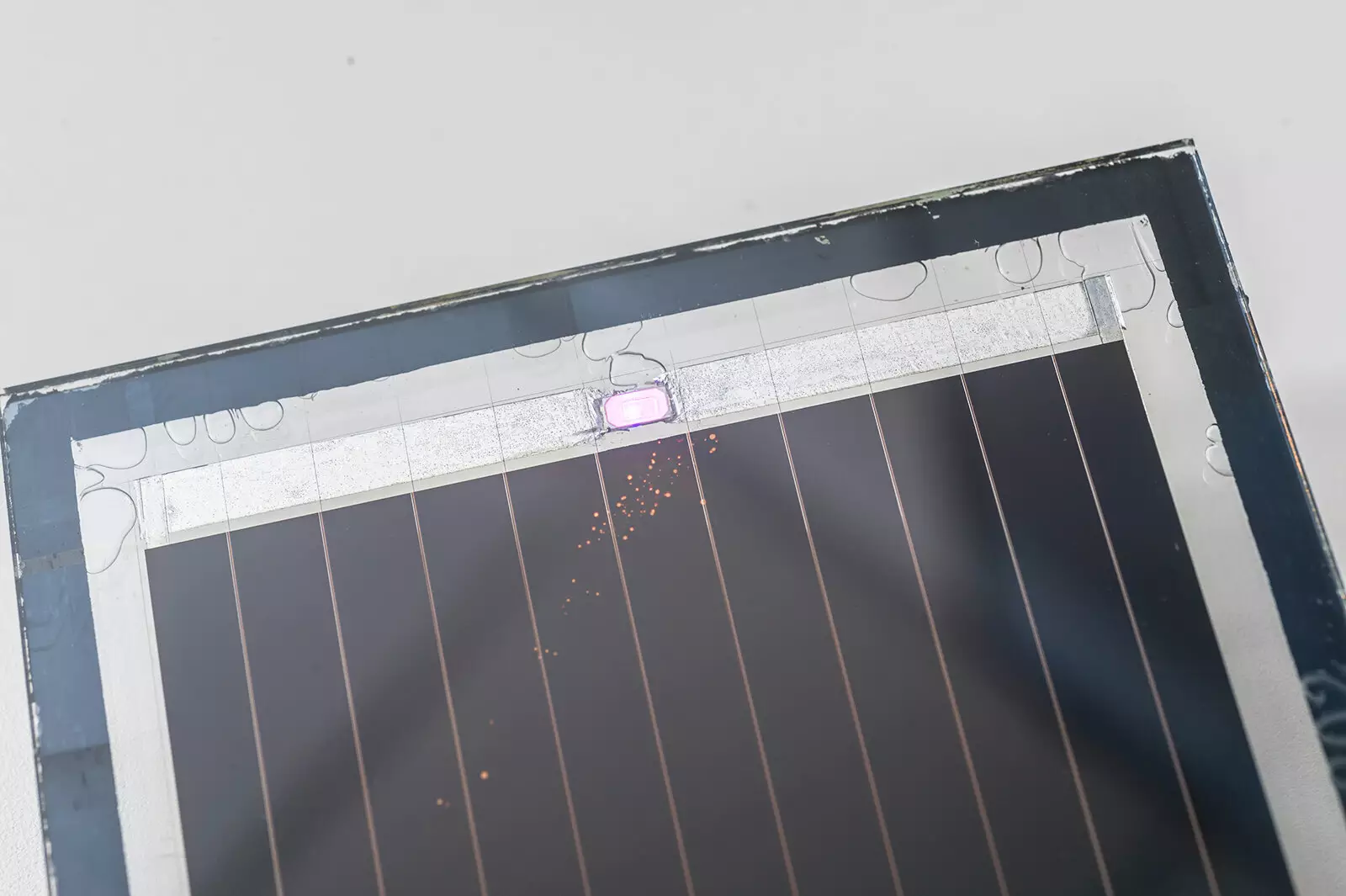In a groundbreaking development, scientists at the City University of Hong Kong (CityUHK) have unveiled a revolutionary approach to solar cell technology. This new breed of perovskite solar cells boasts unparalleled efficiency, printability, and stability, offering a ray of hope for achieving carbon neutrality and advancing sustainable development on a global scale.
One of the key highlights of this innovation is the ability to mass-produce these perovskite solar cells at an unprecedented pace. With a production rate comparable to newspaper printing, the research team at CityUHK has successfully achieved a daily output of up to 1,000 solar panels. This remarkable feat opens up a world of possibilities for scaling up renewable energy solutions in a cost-effective manner.
Moreover, the flexibility and semi-transparency of these perovskite solar cells make them ideal candidates for light-absorbing glass windows. This unique feature enables the realization of “urban solar farms” in densely populated cities characterized by towering skyscrapers. By integrating solar panels into the very fabric of urban landscapes, these cells have the potential to revolutionize the way we harness solar energy in urban environments.
The research team, led by Professor Alex Jen Kwan-yue, has made significant strides in enhancing the long-term stability of perovskite-organic tandem solar cells. Overcoming a longstanding challenge in the field, the integrated cells have demonstrated an impressive retention rate of over 90% of their initial Power Conversion Efficiency (PCE) after 500 hours of continuous operation. This marks a major breakthrough in ensuring the reliability and durability of perovskite solar cells, setting new standards for operational stability.
The CityUHK research team tackled the issue of wide-bandgap perovskite stability with a fresh perspective, leveraging innovative material science solutions. By designing a series of organic redox mediators with tailored chemical potentials, the team successfully addressed the intrinsic vulnerabilities of perovskite devices. This creative approach paved the way for achieving a record-high efficiency of 25.22% (certified 24.27%), underscoring the efficacy of their inventive strategies.
Looking ahead, the research results are poised to transition into practical applications through the establishment of a start-up company, HKTech Solar Limited. Spearheaded by Dr. Francis Lin, a postdoctoral student of Professor Jen, the company aims to commercialize the groundbreaking technology and bring it to market. With the potential to revolutionize the solar energy industry, these perovskite solar cells hold immense promise for widespread adoption and integration across various sectors.
A Vision for a Sustainable Future
The implications of this research extend far beyond the laboratory, offering a glimpse into a future powered by clean, renewable energy sources. From improving energy efficiency in buildings to enabling the integration of solar technology in IoT devices, the versatility of perovskite solar cells knows no bounds. As the team at CityUHK sets its sights on setting up a pilot production line with an annual output of 25 megawatts, the stage is set for a new era of sustainable energy production and consumption.
The breakthrough in perovskite solar cell technology represents a seminal moment in the quest for a greener, more sustainable future. With its potential to revolutionize the way we harness and utilize solar energy, this innovation stands as a testament to the power of scientific ingenuity and collaborative effort. As we embark on this transformative journey towards a carbon-neutral world, the role of innovative technologies like perovskite solar cells cannot be understated.


Leave a Reply